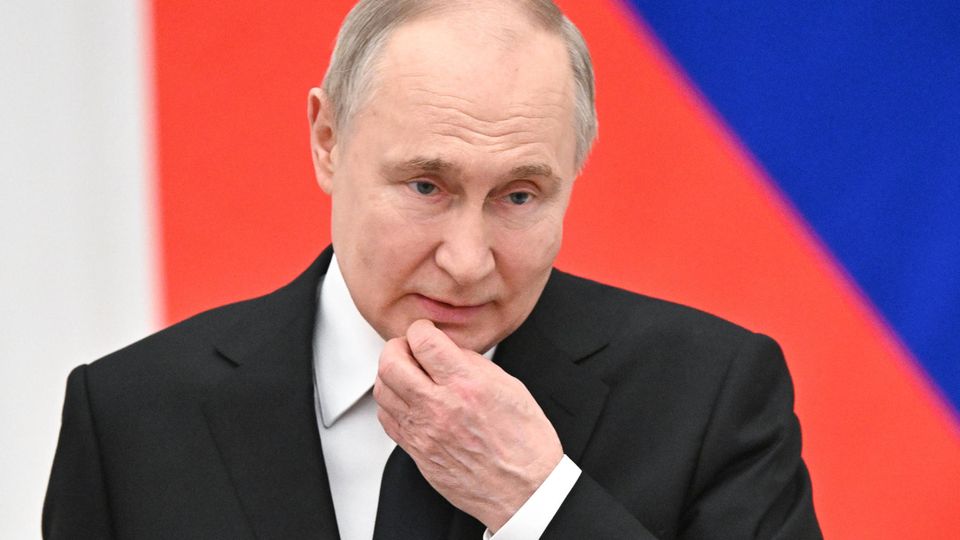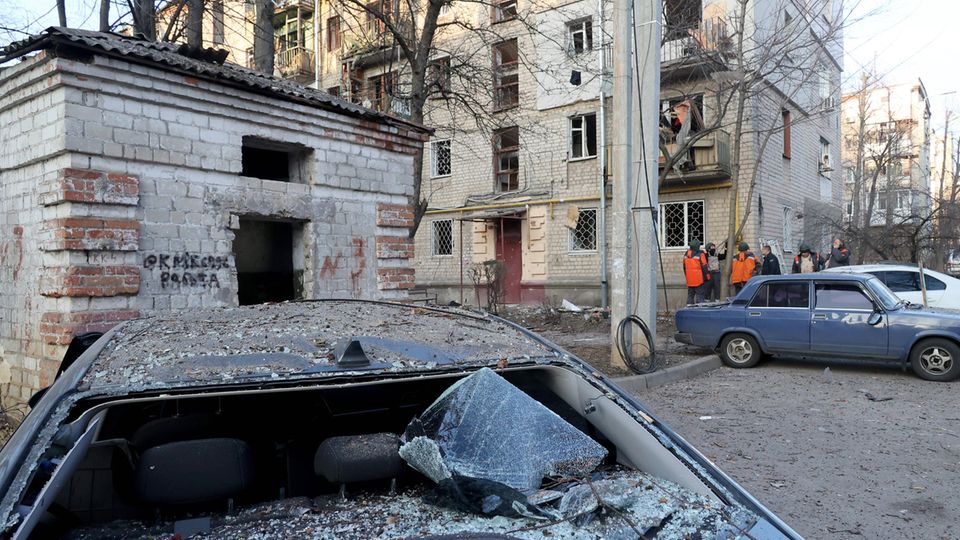Cruise missiles with stealth technology and hypersonic weapons attack Ukraine’s power plants. They don’t damage the systems, they destroy them. Putin wants to bomb Ukraine back into the Stone Age.
On the ground, the Russian troops are slowly advancing in tough positional battles. The fear here is that the fighting is essentially intended to tie up and wear out the Ukrainian troops until the Kremlin begins a new major offensive.
At the same time, the strategic air offensive against Ukraine’s energy supply has entered a new phase. The Russians attacked the power grid as early as winter 2022/2023. Completely successful. The lights didn’t go out everywhere in free Ukraine, but supplies could only be maintained because industry’s power was cut off.
Attack on the power plants themselves
At that time, the power grid nodes were the focus of Russian attacks. This is different now: Putin is primarily attacking the power plants and that is much more dangerous for Ukraine. The attacks are carried out with cruise missiles and also with hypersonic weapons. Accompanying drone attacks serve to keep air defense busy. The simple drones do not achieve the necessary effect for these strikes. A first major wave of attacks took place on March 22nd, then there were isolated attacks and a new wave of attacks started on March 29th with 99 drones and missiles. There is no end to the attacks in sight.
The head of the Ukrainian energy giant DTEK Dmytro Sakharuk confirmed that the Russian missiles were very precise. “The accuracy of the rockets is impressive,” said Sacharuk. While they used to land 100 to 200 meters from the target, they now reached about a meter. They are able to hit the heart of the power plants, the turbines and machine houses.
Not only the precision, but also the explosive power was increased. The Ukrainians report that the Ch-101 stealth cruise missile now has a warhead of 800 kilograms, up from 450 kilograms. 450 kilograms is a typical size for cruise missiles. The Ch-101, Ch-102 models – NATO name AS-23 Kodiak – actually have a range of 3,000 to 4,000 kilometers. The Russians don’t need such distances for their attacks, so they have reduced fuel and increased combat weight. The Ukrainians can hardly intercept the Kodiak; they have stealth technology and electronic jamming measures.
Technical support for planning
With these attacks they destroy power plants across the country. Ukraine’s largest dam – DniproHES – was hit eight times alone. Power producer Centrenergo reported that the 10-unit Zmiivska thermal power plant in the Kharkiv region was destroyed in a major wave of attacks on March 22. With a capacity of 2200 megawatts, it is the largest power plant in eastern Ukraine. To this end, power plants in the Dnipropetrovsk, Poltava and Cherkassy regions were attacked. Aura Sabadus from the British think tank Independent Commodity Intelligence Services told the VOA portal that the Russians know the facilities and their vulnerabilities exactly. “The extraordinary thing is that they knew exactly what they had to attack, which is an indication that they are working with energy specialists on their side who have intimate knowledge of the Ukrainian system and are presumably helping the military.”
The largest energy supplier DTEK said: “The attacks destroyed half of DTEK’s available generation capacity. Five of the six DTEK power plants that were in operation before this week have now suffered severe damage.” Other utilities like Yasno reported losing half their capacity in a week. As the attacks continue unabated, this information may already be outdated.
Only one field remains
It will take months to repair the damage to the power plants, according to DTEK. The repair of the Dnipro hydroelectric power station, even years. “The damage is enormous. No roofs, no equipment, just a simple field remains from our facilities after the attacks… scorched earth.”
This is what distinguishes the new attacks. With the help of its allies, Kiev was able to repair network nodes and substations relatively quickly. The damage now is permanent. The Russians are attacking the facilities with such vehemence that they practically have to be rebuilt. If a repair is successful under attack. These systems are so large that they cannot be built in secret. The industrial infrastructure is being bombed into the Stone Age, to use US General Curtis E. LeMay’s phrase from the Vietnam War.
Strike against the entire economy of Ukraine
What are these attacks supposed to do? The Russians demonstrate that they have achieved the same preponderance in cruise missiles, heavy drones and rockets as in artillery ammunition. The dimensions: Germany has been discussing the delivery of around 200 – albeit highly effective – Taurus cruise missiles for months – and Russia can launch 100 missiles in one night. This flood is also expected to exhaust Ukrainian air defenses. With the current stop in deliveries from the USA, the consumption of defense missiles can hardly be offset.
If the strategic air offensive continues, Kiev will lose a large part of its electricity production. To do this, the Russians attack and destroy gas storage facilities and gas network nodes. Ukraine is now connected to the European power grid, and these connections would also be suitable targets. As are the dams and bridges over the Dnipro. The water supply in large cities could also come into focus.
What’s new about the attacks is what Dmytro Sakharuk called “scorched earth,” or what Russian bloggers describe as “taking off the gloves.” These attacks cause lasting damage that sets Ukraine far back. No thought is given to how life will continue after the war.
If Russia continues to be successful with these attacks, the lights in the hospitals will not go out permanently this time either. But electricity for industry and railways is becoming scarce. For rail transport you can make do with old diesel locomotives, but without electricity the remaining industry will suffer if not collapse. The Russian calculation also aims to damage the remaining defense industry in Ukraine. In light of these attacks, the resettlement of weapons factories could also be reconsidered.
Continue to increase the costs of allies
Obstructions to railways and river crossings will also affect the military, but the real target is the civilian society of free Ukraine. The calculation is simple: without electricity there is no economic life in many sectors. Without production there are no wages and without wages there is no perspective. Perhaps those affected will receive support in Ukraine, perhaps they will flee to EU countries. Both are driving up the allies’ war costs, and Kiev itself cannot fill its budget. A truth that is reluctant to be heard in the West is that the billions of euros that flow into humanitarian aid of any kind put a strain on the budgets of the supporting states without leading to more fighting power against Russia. And that is entirely in Putin’s spirit, as is this calculation: If the pro-European Ukrainians flee to the EU or to the west of the country, it will be much easier for Russia to permanently occupy other parts of Ukraine.




